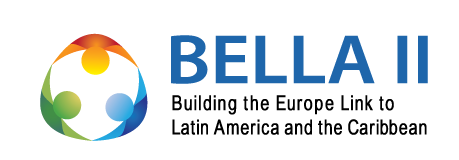With the active participation of multidisciplinary teams and the support of national and international institutions, the “Tracing the Source: Satellite Innovation for Identifying Pollution in the Motagua River Basin” Hackathon officially began on May 5. The event is organized by the Copernicus Academy Guatemala and promoted by RedCLARA and tthe BELLA II program, with the support of the European Union’s Copernicus Program.
The hackathon launched with 16 fully formed teams and 9 still organizing, totaling 25 registered groups—demonstrating a high level of interest and engagement in this innovation challenge. It falls within the broader challenge of “Identifying and Monitoring Pollution Sources inhe Motagua River Basin,” which seeks to leverage satellite technology to address critical environmental issues. By using satellite-based environmental monitoring, participants aim to integrate Earth observation data to detect pollutants, identify waste hotspots, and develop effective mitigation strategies. Copernicus data will be key in improving waste management and pinpointing pollution sources, facilitating coordinated action with local authorities and stakeholders.
Over three weeks, teams will work on challenges such as plastic waste, industrial discharge, and agricultural runoff, developing tools based on satellite imagery and geospatial technologies. The initiative also aims to strengthen a multidisciplinary community that connects academia, science, government, and the private sector.
In the first week, teams will attend a technical session on the environmental context of the Motagua River, an introductory workshop on satellite sensors and geospatial data, and an ideation session using methodologies like Design Thinking and Lean Startup. The second week includes workshops on satellite image processing, business model development using CANVAS, effective pitching, and specialized mentoring. The final week will focus on project delivery, evaluation by a jury, and an awards ceremony scheduled for May 23.
Laura Castellana, RedCLARA’s Manager of Strategic Planning and Management, noted that the hackathon builds on a process that began in February with the virtual Ideathon “Proactive Risk Management in the Motagua River Basin,” which gathered over 90 participants. “We saw creative ideas aimed at supporting the Motagua River. This hackathon is the next step in turning those ideas into tangible solutions,” she said.
Mark Urban, Director of International Cooperation, Academic Relations, and Communications at RedCLARA, emphasized that the event is part of the regional BELLA II initiative, led by RedCLARA and co-financed by the European Union. “BELLA II aims to bridge the digital divide and enhance the infrastructure needed to strengthen a digital ecosystem for science, technology, education, and innovation. As a pillar of the EU–LAC Digital Alliance, it promotes the use of technological tools and Copernicus data to support sustainable development,” he said.
From the National Secretariat for Science and Technology (SENACYT), its head, Gabriela Montenegro, highlighted that pollution in the Motagua River Basin is a national challenge. “This effort brings a ray of hope: through collaboration, we can achieve tangible outcomes that set a precedent for future generations. At SENACYT, we believe in the power of technology, networked collaboration, and creativity to inform decision-making and evidence-based public policy,” she stated.
Jorge Cabrera of the Panama Centre LAC emphasized that Guatemala is one of the countries most actively advancing this initiative, thanks to the joint work of the University of the Valley of Guatemala, the EU Delegation in the country, RedCLARA, and SENACYT. According to Cabrera, satellite-based governance is beginning to take hold in Latin America, and investing in innovation in this field opens up new opportunities.
Among the participants, Estuardo Valle, representing one of the teams, shared his field experience: “In Omoa, Honduras, we saw firsthand the magnitude of the problem. What we seek is sustainability—tools for research, business ideas, and practical solutions should emerge from this process,” he said.
Sophie Cleaves, from another team, highlighted the group’s passion for research and the environment. “We want to contribute through science and education to create a meaningful impact in Guatemala. This is an opportunity to build a community of young scientists using satellite data in support of the environment,” she added.





